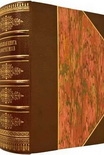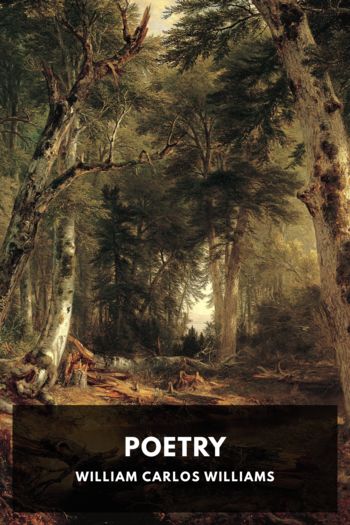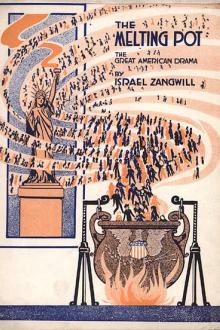No Modernism Without Lesbians, Diana Souhami [love books to read txt] 📗

- Author: Diana Souhami
Book online «No Modernism Without Lesbians, Diana Souhami [love books to read txt] 📗». Author Diana Souhami
Vollard got out paintings by Cézanne of an apple, a nude, a fragment of landscape, a small landscape of Aix-en-Provence, which both Gertrude and Leo liked.
Gertrude wrote to Mabel Weeks using the voice of one of her fictional characters, Melanctha in Three Lives:
We is doin business. We are selling Jap prints to buy a Cézanne at least we are that is Leo is trying. He don’t like it a bit and makes a awful fuss about asking enough money but I guess we’ll get the Cézanne… That is Leo’s connoisseurship. It’s a bully picture all right.
Also in rue Laffitte was the confectioner Fouquet, where Gertrude and Leo treated themselves to strawberry conserve in a glass bowl or honey cakes and nut candies.
In October 1904 the second autumn salon opened at the Grand Palais in the Champs Élysées. The autumn salons began as a showcase for new artists, in contrast to the more staid spring salons. There was a whole room of Cézannes, fourteen paintings by Matisse, work by Toulouse-Lautrec, Bonnard and Vuillard. For Gertrude and Leo, the show was a turning point in their passion for modern art. That month, Michael said they had an unexpected windfall of 8,000 francs between them. They went to Vollard’s, looked through his stacks of canvases, chose two Gauguins – Three Tahitians for Leo and Sunflowers for Gertrude (‘they were rather awful, but finally we liked them,’ she said); two versions of Cézanne’s The Bathers and two Renoirs. Gertrude said they bought in twos because they couldn’t agree on which they preferred. They still had money left, and over honey cakes at Fouquet’s discussed buying a big portrait by Cézanne of his wife, Hortense, sitting in a red armchair. They took it home in a taxi and hung it in the studio where Gertrude worked at night.
The little-known artists whose paintings they bought, happened to be Matisse, Picasso, Cézanne… For Gertrude, the ideas resonant in their work – new ways of seeing and departure from received forms of expression – echoed her own thinking. Within a short space of time, her and Leo’s collection was worth more than a great deal of money.
Madame Cézanne
Gertrude thought the portrait of Madame Cézanne revolutionary. It influenced her writing of Three Lives. She said Cézanne built up his portrait with planes of colour and she built up her characters with repetitive sentences. She said there was no centre to the picture to give it an organizing principle: the composition was the picture and she saw in this what she herself wanted to do. She wanted the mental processes of her characters to shape her prose and for her writing to be at ‘the front edge of time’, smash assumptions of nineteenth-century order and structure, and let a new art emerge.
Cézanne gave me a new feeling about composition. I was obsessed by this idea of composition. It was not solely the realism of characters but the realism of the composition which was the important thing. This had not been conceived as a reality until I came along but I got it largely from Cézanne.
Years later she claimed that Melanctha was ‘the first definite step away from the nineteenth century and into the twentieth century in literature’, but at the time of writing she was unconfident. Leo saw no artistic merit in her stories and she was disheartened by his lack of praise or even minimal encouragement. She wrote again to Mabel Weeks:
I went to bed very miserable… there ain’t any Tschaikowsky Pathetique or Omar Kayam or Wagner or Whistler or White Man’s Burden or green burlap in mine… Dey is very simple and very vulgar and I don’t think they will interest the great American public. I am very sad Mamie.
Over time, Leo’s refusal to validate Gertrude’s work – and he never would give her a morsel of encouragement – caused an irreparable break in their relationship.
Gertrude wrote Melanctha at night with Madame Cézanne on the wall in front of her. There was no particular beginning, middle or end to her story. She wrote in what she called a ‘continuous present’ and thought this closer to people’s true experience of reality: a multi-facetedness, ‘Always and always. Must write the hymn of repetition,’ she said.
Matisse
The following year, 1905, Gertrude, Leo, Michael and Sarah Stein and Claribel and Etta Cone all went again to the salon d’automne at the Grand Palais. Claribel Cone wrote of:
a riot of colour – sharp and startling, drawing crude and uneven, distortions and exaggerations – composition primitive and simple as though done by a child…
The walls were covered with such canvases. The influential art critic Louis Vauxcelles, seeing a Renaissance sculpture by Donatello displayed among these riotous paintings, wrote of ‘Donatello parmi les fauves’ – Donatello among the wild beasts.
So these groundbreaking artists became known as ‘les Fauves’. Vauxcelles thought them dangerous and a new and horrible departure in art by a group of youngsters who proscribed classical drawing ‘in the name of I-don’t-know what pictorial abstraction’.
This new religion hardly appeals to me. I don’t believe in this Renaissance… M. Matisse, fauve-in-chief; M. Derain, fauve deputy; Monsieurs Othon Friesz and Dufy, fauves in attendance… and M. Delaunay…, infantile fauvelet…
The Cone sisters were among the mystified viewing the exhibition:
We asked ourselves ‘Are these things to be taken seriously’… Across the room we found our friends earnestly contemplating a canvas – of a woman with a hat tilted jauntily at an angle on the top of her head – the





Comments (0)